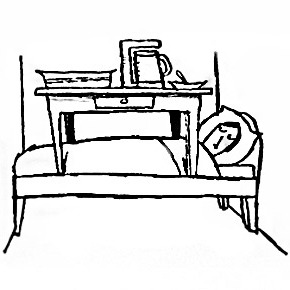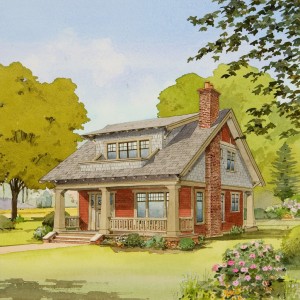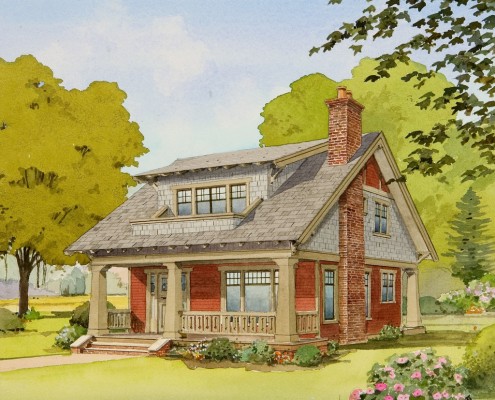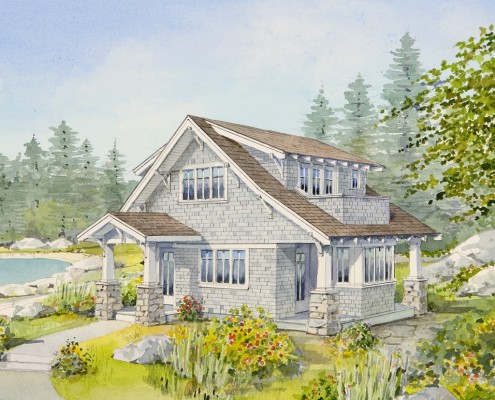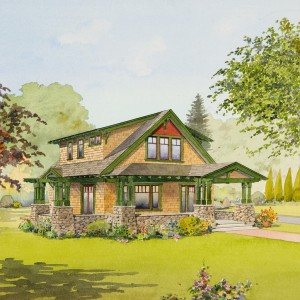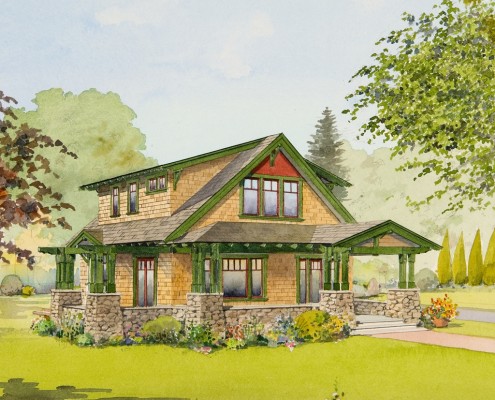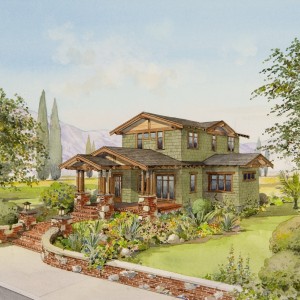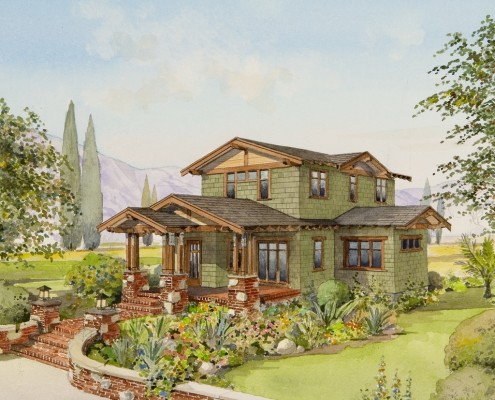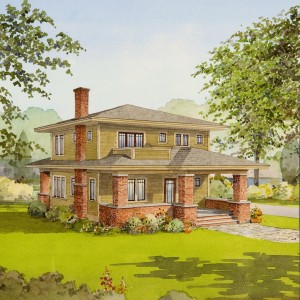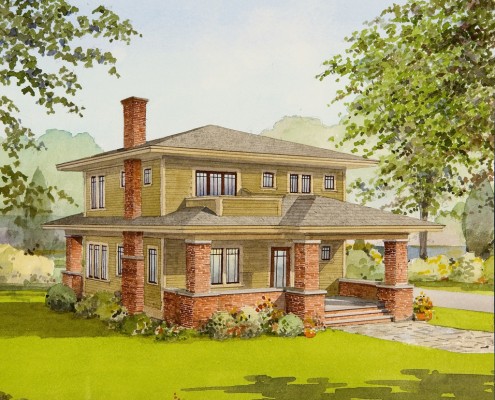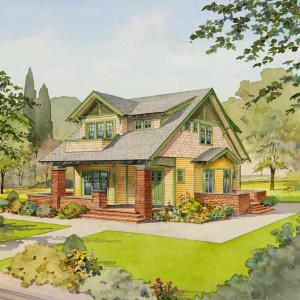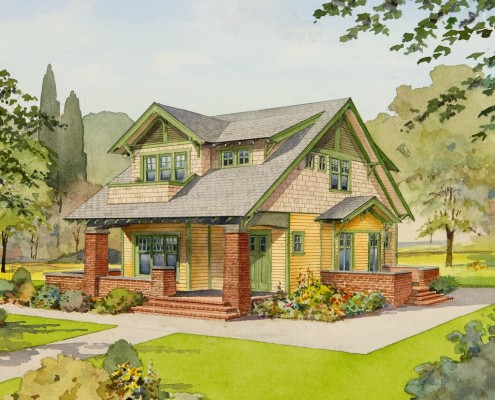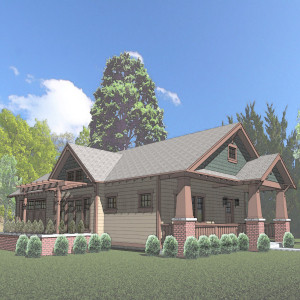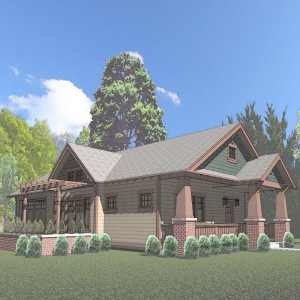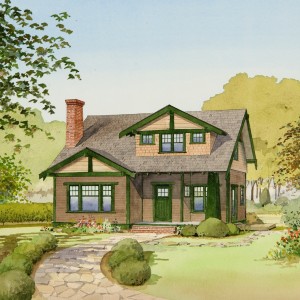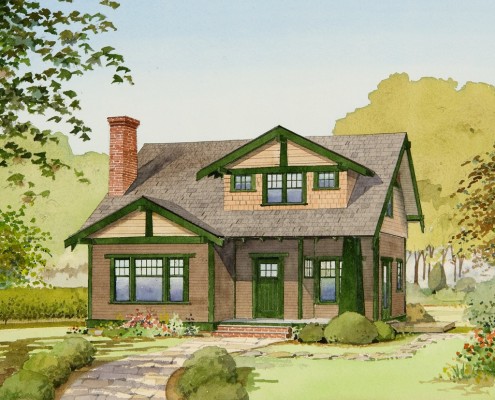In many American communities, there is a trend toward smaller homes. Individuals and families are shedding larger homes and opting for smaller, more efficient spaces, claiming a real and perceived mental and economic cost savings.
When we buy a house, we also acquire a debt for 15-30 years, sometimes more. The struggle to pay the mortgage and utility bills, keep the house clean, take care of the yard, and leave as small an environmental footprint as possible can drain the joy out of homeownership.
This reality has led many people to join the “small house movement”; to them, a life-changing step.
The Small House Movement
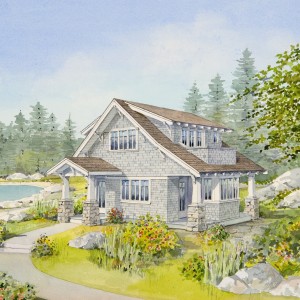
Small house design with multilevel outdoor space.
The ideas behind the small house movement have been around for at least a couple centuries. Look no further than Henry David Thoreau’s “experiment”, where he lived a life of true simplicity and sustainability in a cabin in the woods.
Small house living therefore requires a major rethinking of our current lifestyle. Before deciding to downsize, we must evaluate the needs of ourselves and our family. For instance, does each child need his/her own room or could the children share? Could you use one room as both a bedroom and an office? Could you manage with only one bathroom for the family? Can a bed double as a couch and a table as a desk? Take a look at the floor plans of your current house; you may be surprised at how many superfluous rooms there are.
On the other hand, you want to be snug, not cramped. Think hard about whether eliminating a space would interfere with the smooth running of the household. A mismatch between layout and comfort can create more problems than you have now.
What about a tiny house?
Some members of the movement have literally followed in Thoreau’s footsteps, opting to trade their 2,000-square-foot home for a 200-square-foot “tiny house”. To do this, they had to relinquish most of their non-essential possessions, which was emotionally difficult. But when no longer bound to a mortgage or weighed down by unused things, they experienced an extraordinary feeling of liberation. They paid lower bills, bought less stuff, and lived in greater harmony with the environment. Building their house on a trailer not only avoided building code violations and qualified them for an RV loan, but it added an element of mobility that many—particularly retirees—found appealing.
But if you’re not quite ready for a tiny, mobile house…
Though a noble undertaking, this extreme end of the downsizing spectrum frightens people away who want to go small but not that small. In Thoreau’s day it was a bit easier to leave everything and move to a cabin in the woods. The average American homeowner today would simply feel claustrophobic in one of Jay Shafer’s Tumbleweed Tiny House models.
While architect and author Sarah Susanka agrees that Shafer’s designs are inspiring and thought-provoking, she doesn’t go that far in her 1997 book, The Not So Big House: A Blueprint for the Way We Really Live, which helped to launch the small house movement. Instead, she emphasizes that the actual square footage is not as important as its use.
If you can use all 4,000 square feet of a house, that’s wonderful! Others may need only 400. Susanka advocates “build better, not bigger.” You could also phrase it as “waste not, want not,” because that’s what the movement is really about: not going “tiny” by default, but making sure that all available space is used practically and sustainably.
Obstacles within the current system.
For many (myself included) it is the potential impermanent nature of tiny, portable housing that makes it feel fringe. I want to be part of the urban fabric but only pay for what I use not be bound by a perceived infrastructure that I don’t need. Zoning and infrastructure make this a fringe way of living.
There needs to be a way to make this congruent with the urban fabric. For it to work, it needs to be as viable as buying or building a big house, not a fringe alternative. Mobility should be a benefit to the whole package. Small portable structures would allow us to work around tree and slope in a way that conventional houses do not.
Of course, we don’t have to move on to a tiny portable dwelling to downsize. Moving from a traditional home to a smaller home will produce the same mental and economic relief. But there are some obstacles.
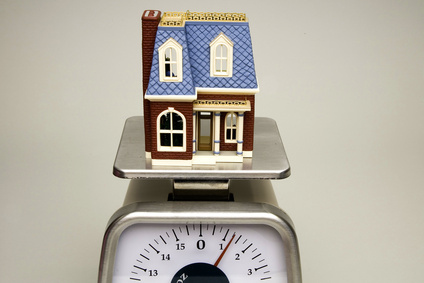 One obstacle to living smaller is that the economic system around building a smaller house are sometimes difficult to bridge. Smaller homes tend be more expensive per square foot to build because the core element of a house are prorated over less square feet. For example every house needs a kitchen, a bedroom, a furnace, a septic system or connection to public sewer, water tap or well and all of these elements are costly. As you add larger bedrooms or living rooms those areas are less expensive to build so the cost per square foot decreases while the square footage increases.
One obstacle to living smaller is that the economic system around building a smaller house are sometimes difficult to bridge. Smaller homes tend be more expensive per square foot to build because the core element of a house are prorated over less square feet. For example every house needs a kitchen, a bedroom, a furnace, a septic system or connection to public sewer, water tap or well and all of these elements are costly. As you add larger bedrooms or living rooms those areas are less expensive to build so the cost per square foot decreases while the square footage increases.
Yes, you may still spend more but lenders are often more comfortable lending more on a bigger house because square footage is one of the primary elements used in appraisal. Unfortunately size does matter in the lending world. Too often lending institutions are less concerned with quality, efficiency and durability on appraisals than they are about size.
This is a big deal, because it affects a builder’s incentive to build smaller. The real-estate community also pushes back because size is really one of the key comparisons they do when selling and it’s even how houses are listed in the MLS.
All square feet are not created equal and perhaps the first 800 sq.ft. of any house should be valued one way and the second should have a lesser value to equalize the formula. To accomplish anything like this, the system needs to change. What will it take for our building, lending and, yes, us to change our values from quantity to quality?
How do you live?
It’s important to embrace the idea that how you live in a house will evolve over time, and that you will not always need a huge house . There will be times when your home is more crowded and times when it is less. This is part of how families evolve.
Separate spaces for everything often lead to houses that are secluding and under utilized. Flexibility goes a long way in replacing square footage. Designing for today’s lifestyle demands that we look at how we live and work today, not how we did 100 years ago.
Location and climate also can drive size. More time spent outside or open to outside can drive down the footprint. Small house plans with porches will give the sense of a much larger home without increased square footage and maintenance.
Consumers also struggle with the size of furnishings used in a house; stuff is big today, really big. Stores like Costco demand that we buy in bulk to save money, so we build huge pantries to store more stuff than we need. This drives the consciousness of more space and the price to build.
But there are opportunities. For instance, we spend a lot of time connected to computers, video games, and handheld devices. A simple way to cut down on space is to consolidate places where we experience media and even work. Consider an open floor plan with multiple uses.
Don’t expand, rethink!
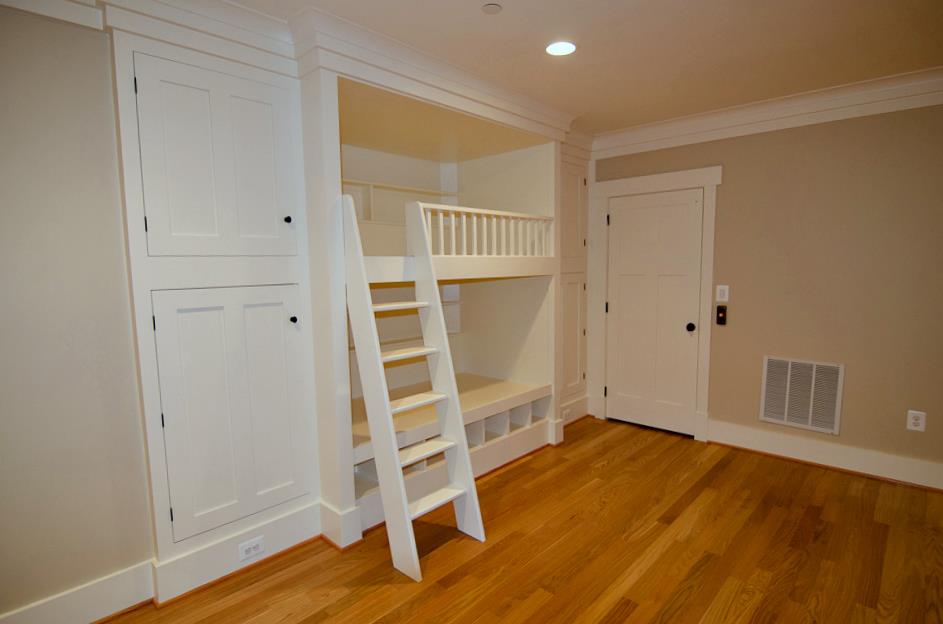 In many ways closets in kids bedrooms are very inefficient and inflexible ways to store clothing. In a small room if you take up 25 percent of the wall space with closet doors, entry doors and windows, it takes away flexibility and ultimately a piece of furniture might be a better, more efficient, flexible and organized way to store children’s clothes.
In many ways closets in kids bedrooms are very inefficient and inflexible ways to store clothing. In a small room if you take up 25 percent of the wall space with closet doors, entry doors and windows, it takes away flexibility and ultimately a piece of furniture might be a better, more efficient, flexible and organized way to store children’s clothes.
Many bathrooms are expensive and resource intensive. Clever ideas around how to compartmentalize a bathroom are often a good way to reduce the number of bathrooms and still provide privacy and functionality.
Garage plans are often under designed and end up being the catch all for everything. A smaller, well planned garage might do better at storing cars and a shed or small outbuilding might do better at storing bikes and encourage the use of a bike if it is more conveniently located.
Good planning on a site helps you live small. If public and private spaces can look out or open up to a nice view vignette it can make these spaces more enjoyable.
A final thought
The promise of a small house is real. Imagine a home where everything is within reach (and few things get lost); no space is wasted; privacy doesn’t compete with intimacy; and the utility bills are no longer dreaded. With the right plan, you can find your Walden in a smaller home.
The Bungalow Company Small House Plan Collection
Building a new bungalow, is an opportunity to explore how you currently live your life versus how you would like to live your life. Drawing from life experiences and applying them to the design process brings thought, purpose and specificity to a home; when integrated with reverence for the land, creates a home of great architecture. Be introspective. Decide what you need and want. Don’t be a victim of real-estate marketing studies that define what the average person wants. The home you build will be for you and your family.
Executing a successful project involves developing a cohesive team between owner, designer and builder. Hiring a design professional is more involved than picking one out of the phone book. Choose a designer based on previous work you have seen, recommendations, and a personal connection. A designer is a professional guide through the design process, there to ensure a quality design that meets building standards and is within your budget. Equally important is the selection of a qualified builder. The ideal builder will have experience in building homes that you like, have an established relationship with your designer, and have a history of financial responsibility and of projects delivered on time. Clear and honest communication between owner, designer and builder, is necessary in meeting all parties’ expectations.
Simplicity is the heartbeat of the small bungalow and is the key to building a successful project. Having a home designed and built is much more than obtaining a plan and having a contractor show up and start building. Great buildings that stand the test of time ultimately evolve with culture, technology and lifestyle.
You’ll find that the Bungalow Company’s small house plans utilize space-saving techniques. Rooms with related uses are grouped together, reducing the time it takes to go from one to the other. In some cases a central hallway works best to connect rooms, and in others the rooms themselves make better traffic corridors. Built-in bookcases, kitchen nooks, and storage areas are tucked out of the way, creating more space. Windows and skylights diffuse natural light around the house, expanding one’s view of the interior. Extending an upstairs bedroom so that it projects over the first floor makes the room seem larger.
The following small bungalows and garages are designed to work in traditionally designed neighborhoods, infill lots in historic neighborhoods, or on rural property. The intent of these designs is to create a new small bungalow that reflects the lifestyle of today’s families. The designs, inspired by the principals in this book, are focused on reinterpreting the ideals and principles of the bungalow for this century. Creating smaller homes with flexible spaces allows the integration of new technology into bungalows, while maintaining a dedication to the detail and craftsmanship that defines the bungalow. It is our hope that these homes will serve as an inspiration for a new generation of homebuyer that is truly in search of the not-so-big house.


